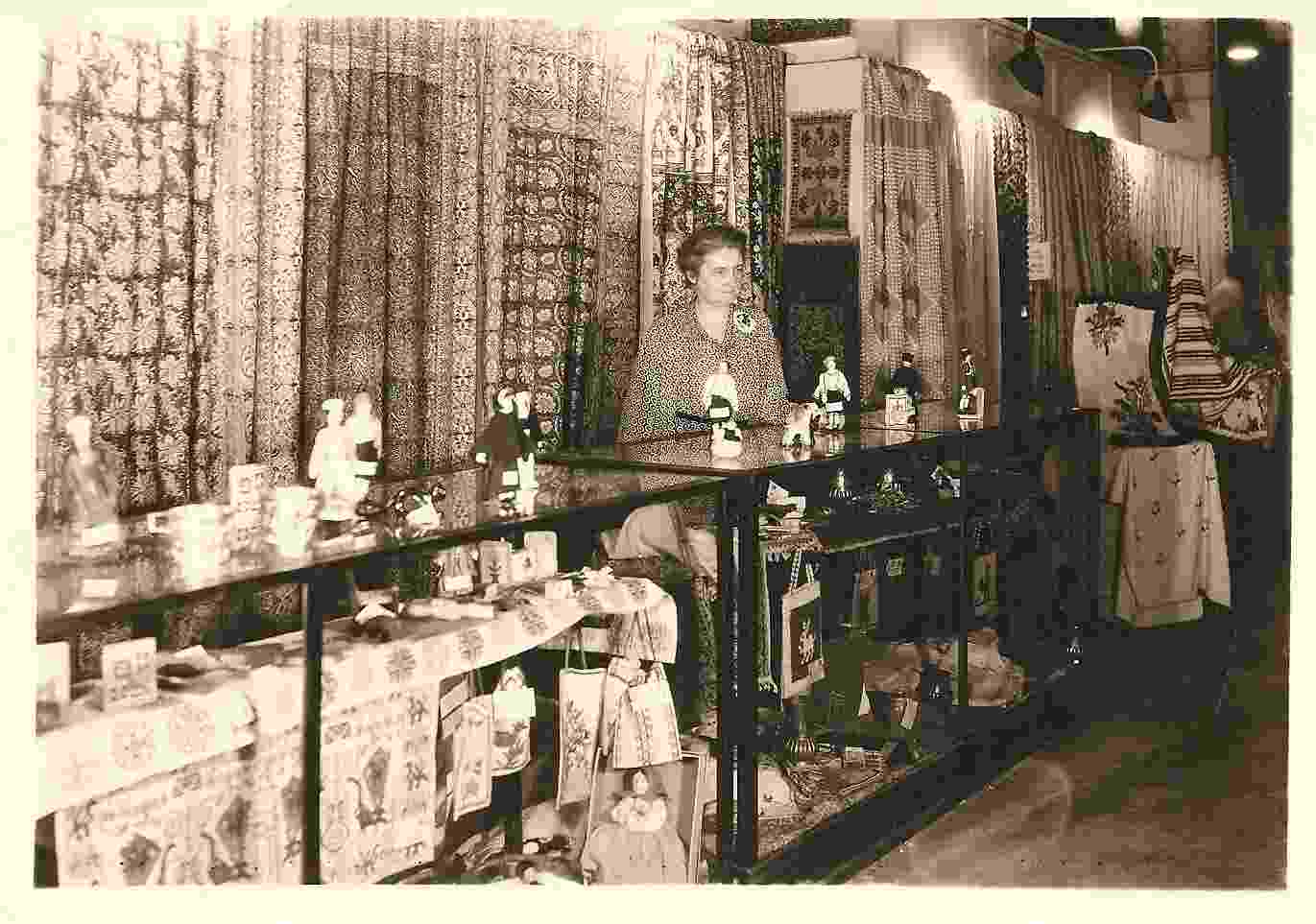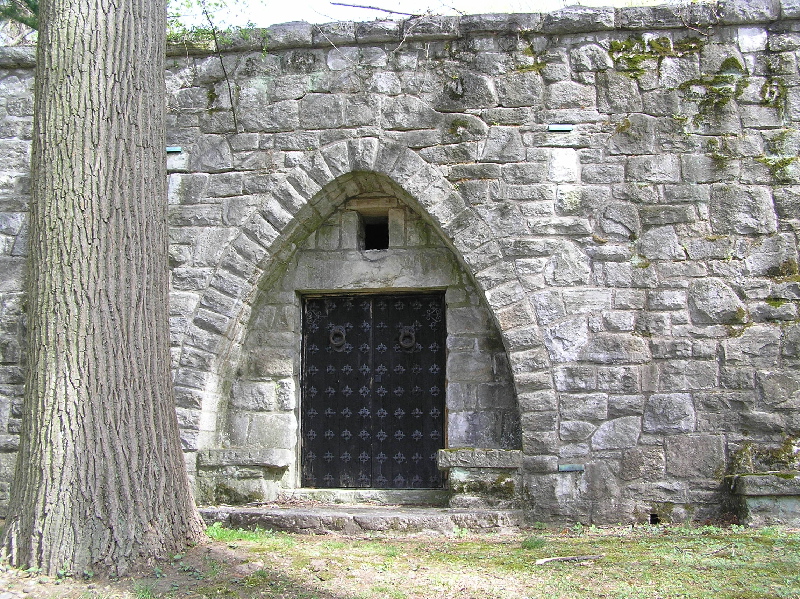|
Florence Spencer Duryea
Florence Spencer Duryea was an American philanthropist and clubwoman, national secretary of Women's Organizations for Near East Relief, based in New York City. Personal life Florence M. Spencer was born on June 30, 1884, and raised in Brooklyn, New York. After her mother's death when Mrs. Duryea 7 years old, she was raised by her grandmother and great grandmother. Hers was a proper Victorian/Edwardian upbringing, which instilled in her manners and morals she practiced throughout her life. Florence M. Spencer married Edwin D. Duryea in 1911, in Brooklyn. They divorced in 1915. After her divorce, something of which she never spoke (because proper ladies were not supposed be divorced and she had opposed hers), she became involved in philanthropic pursuits. She was an active Suffragette, a great admirer and distant acquaintance of Mrs. Eleanor Roosevelt, and an active member of her church. She was a member of The Women's Club and the C.L.S.C. of Chautauqua Institution, New York ... [...More Info...] [...Related Items...] OR: [Wikipedia] [Google] [Baidu] |
Clubwoman
The woman's club movement was a social movement that took place throughout the United States that established the idea that women had a moral duty and responsibility to transform public policy. While women's organizations had always been a part of United States history, it was not until the Progressive era that it came to be considered a movement. The first wave of the club movement during the progressive era was started by white, middle-class, Protestant women, and a second phase was led by African-American women. These clubs, most of which had started out as social and literary gatherings, eventually became a source of reform for various issues in the U.S. Both African-American and white women's clubs were involved with issues surrounding education, temperance, child labor, juvenile justice, legal reform, environmental protection, library creation and more. Women's clubs helped start many initiatives such as kindergartens and juvenile court systems. Later, women's clubs tackle ... [...More Info...] [...Related Items...] OR: [Wikipedia] [Google] [Baidu] |
Near East Foundation
The Near East Foundation (NEF), founded in 1915 as the American Committee on Armenian Atrocities, later the American Committee for Relief in the Near East (ACRNE), and after that Near East Relief, is a Syracuse, New York-based American international social and economic development organization, originally dedicated to the aid of Greek, Armenian and Assyrian victims of the Ottoman Empire. The NEF is the United States' oldest nonsectarian international development organization and the second American humanitarian organization to be chartered by an act of Congress. Near East Relief organized the world's first large-scale, modern humanitarian project in response to the unfolding Armenian and Assyrian genocides. Known as the Near East Foundation since 1930, NEF pioneered many of the strategies employed by the world's leading development organizations. In the past 100 years NEF has worked with partner communities in more than 40 countries. The foundation had organised the world's first ... [...More Info...] [...Related Items...] OR: [Wikipedia] [Google] [Baidu] |
Brooklyn, New York
Brooklyn () is a borough of New York City, coextensive with Kings County, in the U.S. state of New York. Kings County is the most populous county in the State of New York, and the second-most densely populated county in the United States, behind New York County (Manhattan). Brooklyn is also New York City's most populous borough,2010 Gazetteer for New York State . Retrieved September 18, 2016. with 2,736,074 residents in 2020. Named after the Dutch village of Breukelen, Brooklyn is located on the w ... [...More Info...] [...Related Items...] OR: [Wikipedia] [Google] [Baidu] |
Newspapers
A newspaper is a periodical publication containing written information about current events and is often typed in black ink with a white or gray background. Newspapers can cover a wide variety of fields such as politics, business, sports and art, and often include materials such as opinion columns, weather forecasts, reviews of local services, obituaries, birth notices, crosswords, editorial cartoons, comic strips, and advice columns. Most newspapers are businesses, and they pay their expenses with a mixture of subscription revenue, newsstand sales, and advertising revenue. The journalism organizations that publish newspapers are themselves often metonymically called newspapers. Newspapers have traditionally been published in print (usually on cheap, low-grade paper called newsprint). However, today most newspapers are also published on websites as online newspapers, and some have even abandoned their print versions entirely. Newspapers developed in the 17th ... [...More Info...] [...Related Items...] OR: [Wikipedia] [Google] [Baidu] |
NER Sale
NER may refer to: * New European Recordings, a record label * ISO 3166-1 three letter code for Niger * Named entity recognition, a text processing task that identifies certain words as belonging to one class or another * Northeast Regional, an Amtrak route that operates along the Northeast Corridor, in the US. * North Eastern Railway (India) * North Eastern Railway (United Kingdom) * Northern and Eastern Railway (N&ER), an early British rail company * North-East India, known as North Eastern Region * Nucleotide excision repair Nucleotide excision repair is a DNA repair mechanism. DNA damage occurs constantly because of chemicals (e.g. intercalating agents), radiation and other mutagens. Three excision repair pathways exist to repair single stranded DNA damage: Nucle ..., a DNA repair mechanism * Network Effectiveness Ratio, KPI in telecommunications * New England Revolution, American soccer team * '' Nemzeti Együttműködés Rendszere'' (NER, en, System of National ... [...More Info...] [...Related Items...] OR: [Wikipedia] [Google] [Baidu] |
Ipswich Mills Historic District
The Ipswich Mills Historic District encompasses a major textile mill complex and associated worker housing along the Ipswich River near the center of Ipswich, Massachusetts. The district includes the factories of the Ipswich Mill Company (off Union and Estes Streets), and several blocks of modest worker cottages mostly on side streets off Estes and Kimball Streets. The site had been used as for mills since the 17th century, and was purchased by the Ipswich Mill Company (owned by textile magnate Amos Adams Lawrence) in 1868. Mill worker housing was built surrounding the complex through the early 20th century, when River Court, Peatfield Street, and 1st through 6th Streets were laid out. The district was listed on the National Register of Historic Places in 1996. Description and history The Ipswich Mills district is located just south of the Ipswich central business district, on the west bank of the Ipswich River and south of the Choate Bridge. It is bounded on the west by rai ... [...More Info...] [...Related Items...] OR: [Wikipedia] [Google] [Baidu] |
Stephen Samuel Wise
Stephen Samuel Wise (March 17, 1874 – April 19, 1949) was an early 20th-century American Reform rabbi and Zionist leader in the Progressive Era. Born in Budapest, he was an infant when his family immigrated to New York. He followed his father and grandfather in becoming a rabbi, serving in New York and in Portland, Oregon. Wise was also a founding member of the NAACP. Early life Wise was born on March 17, 1874, in Budapest in the Austro-Hungarian Empire, the son and grandson of rabbis and their wives. His grandfather, Joseph Hirsch Weiss, was rabbi of a small town near Budapest. His father, Aaron Wise, earned a PhD and ordination in Europe. Wise's maternal grandfather, Móric Fischer de Farkasházy, created the Herend Porcelain Company. When Wise's father sought to unionize the company, Moric gave the family one-way tickets to New York. Wise was an infant when they immigrated, and his father Aaron Wise became rabbi of Congregation Baith Israel Anshei Emes in Brooklyn, New Y ... [...More Info...] [...Related Items...] OR: [Wikipedia] [Google] [Baidu] |
Nexhmie Zaimi
Nexhmie Zaimi (born in Libohovë, Albania on 14 May 1917, died 18 April 2003 in Santa Barbara, California, Santa Barbara, California) was a noted Albanian American author and journalist. Early life and marriage In Albania, when Zaimi was twelve and half years old, her father visited her in her bedroom and proceeded to tell her that she would have to begin wearing a veil whenever she went out of the house. When he handed her the Veil#Islam, veil, without saying a word, she opened the window and threw the scarf onto the neighbours roof where it remained for several days. Her father, angry, called her a "wild goat", the equivalent of tomboy in Albania, and left the room. This rebellious act would set the tone for Zaimi's adult life. Nexhmie was one of the first six girls (along with her brother Mehmet) to attend high school in Albania, run by American Presbyterian missionaries. While a teenager in Albania, her traditional family tried to force her into marriage. She ran away from Alba ... [...More Info...] [...Related Items...] OR: [Wikipedia] [Google] [Baidu] |
Chautauqua Institute
The Chautauqua Institution ( ) is a 501(c)(3) nonprofit education center and summer resort for adults and youth located on in Chautauqua, New York, northwest of Jamestown in the Western Southern Tier of New York State. Established in 1874, the institution was the home of and provided the impetus for the Chautauqua movement that became popular in the United States in the late 19th and early 20th centuries. The Chautauqua Institution Historic District is listed on the National Register of Historic Places and was further designated a National Historic Landmark. History Chautauqua was founded in 1874 by inventor Lewis Miller and Methodist Bishop John Heyl Vincent as a teaching camp for Sunday-school teachers. The teachers would arrive by steamboat on Chautauqua Lake, disembark at Palestine Park and begin a course of Bible study that used the Park to teach the geography of the Holy Land. The institution has operated each summer since then, gradually expanding its season length and ... [...More Info...] [...Related Items...] OR: [Wikipedia] [Google] [Baidu] |
Philanthropists From New York (state)
Philanthropy is a form of altruism that consists of "private initiatives, for the Public good (economics), public good, focusing on quality of life". Philanthropy contrasts with business initiatives, which are private initiatives for private good, focusing on material gain; and with government endeavors, which are public initiatives for public good, notably focusing on provision of public services. A person who practices philanthropy is a List of philanthropists, philanthropist. Etymology The word ''philanthropy'' comes , from ''phil''- "love, fond of" and ''anthrōpos'' "humankind, mankind". In the second century AD, Plutarch used the Greek concept of ''philanthrôpía'' to describe superior human beings. During the Middle Ages, ''philanthrôpía'' was superseded in Europe by the Christian theology, Christian cardinal virtue, virtue of ''charity'' (Latin: ''caritas''); selfless love, valued for salvation and escape from purgatory. Thomas Aquinas held that "the habit of charity ... [...More Info...] [...Related Items...] OR: [Wikipedia] [Google] [Baidu] |
People From Brooklyn
A person ( : people) is a being that has certain capacities or attributes such as reason, morality, consciousness or self-consciousness, and being a part of a culturally established form of social relations such as kinship, ownership of property, or legal responsibility. The defining features of personhood and, consequently, what makes a person count as a person, differ widely among cultures and contexts. In addition to the question of personhood, of what makes a being count as a person to begin with, there are further questions about personal identity and self: both about what makes any particular person that particular person instead of another, and about what makes a person at one time the same person as they were or will be at another time despite any intervening changes. The plural form "people" is often used to refer to an entire nation or ethnic group (as in "a people"), and this was the original meaning of the word; it subsequently acquired its use as a plural form of per ... [...More Info...] [...Related Items...] OR: [Wikipedia] [Google] [Baidu] |








_1938.jpg)